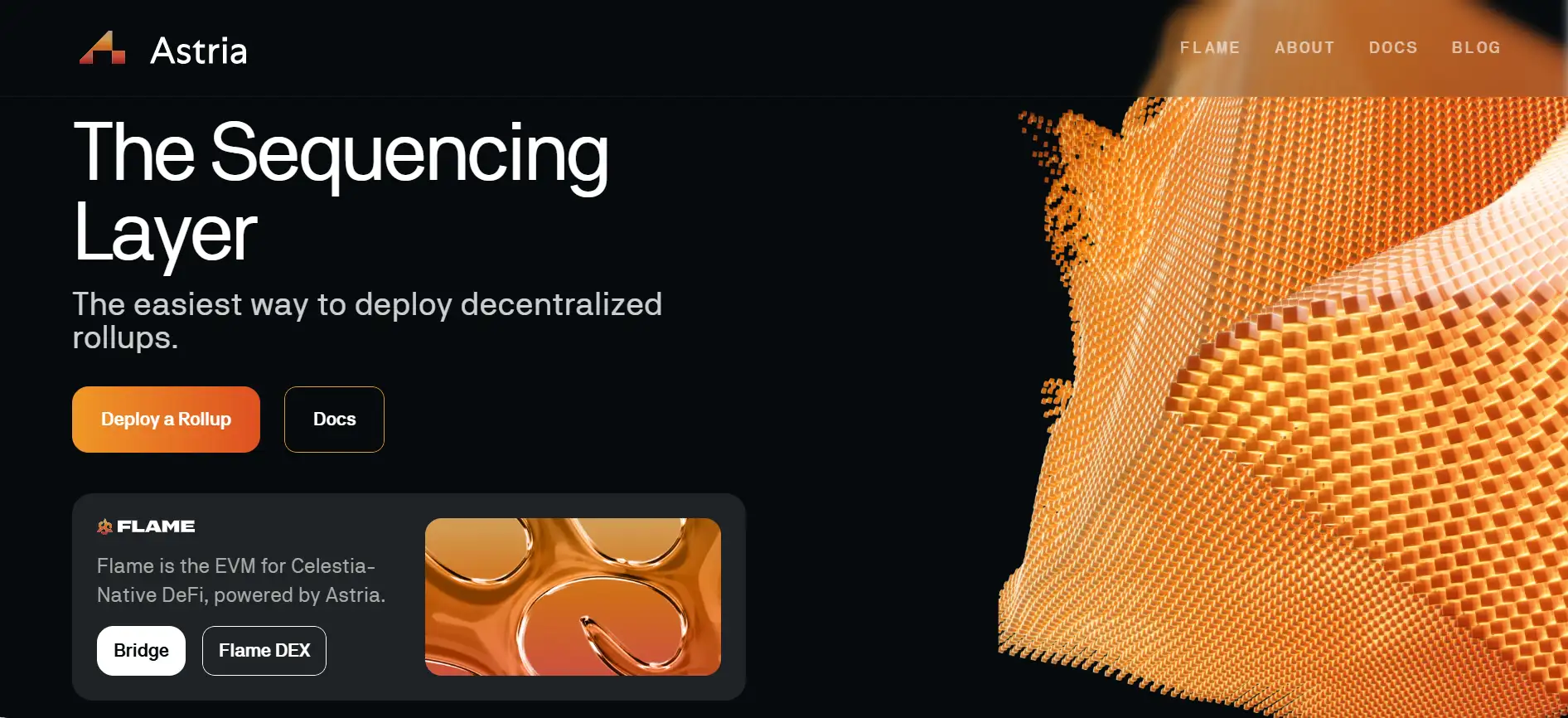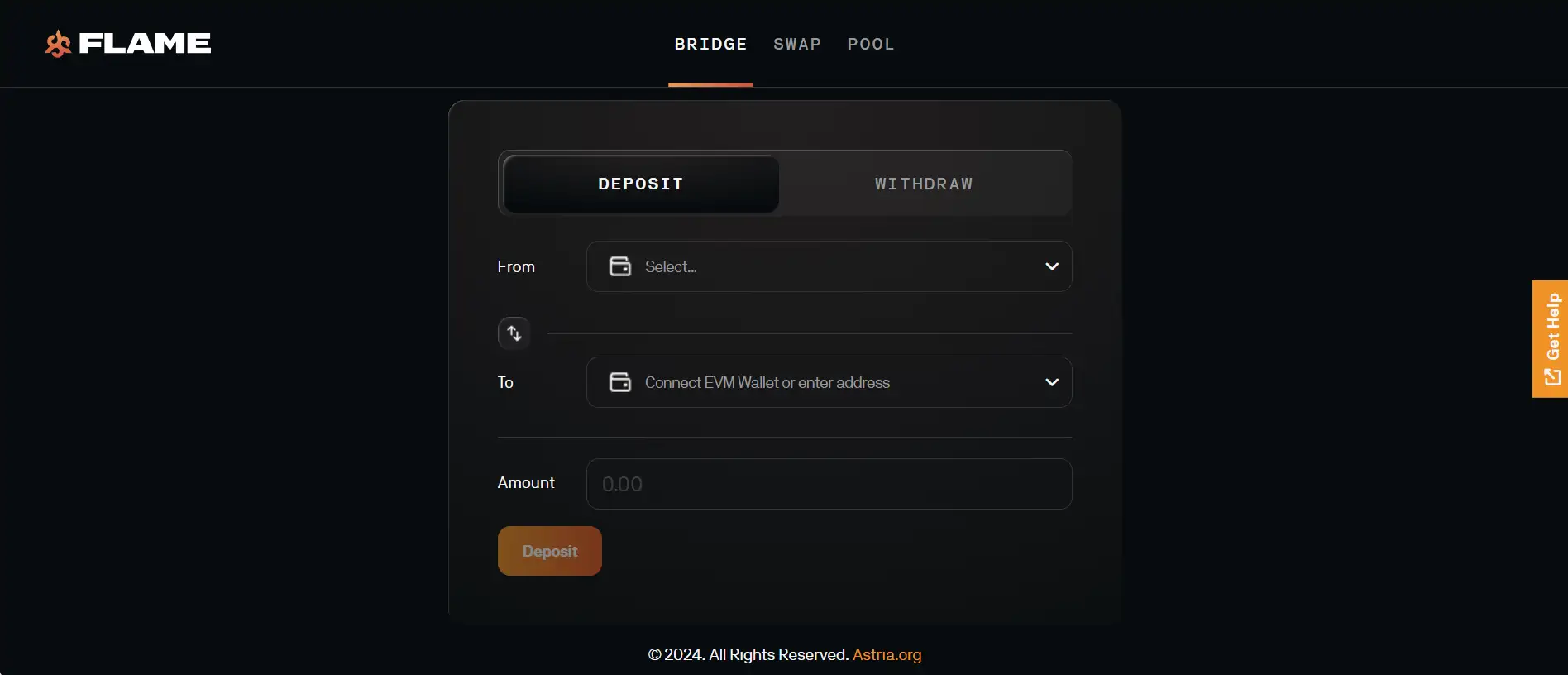About Astria
Astria is a decentralized sequencing layer that simplifies the deployment of modular rollups by enabling many rollups to share a single decentralized sequencer network. Built to function natively with Celestia, it delivers unmatched flexibility and efficiency for rollup developers while removing centralized bottlenecks. Astria redefines how data sequencing and availability are handled in the modular blockchain architecture, placing transparency and decentralization at its core.
By separating execution from consensus, Astria allows rollup developers to maintain full control over their logic while relying on a highly available and verifiable sequencing layer. This approach empowers the creation of permissionless, interoperable, and scalable applications with minimal infrastructure overhead. Astria is especially impactful for developers seeking a plug-and-play method to launch decentralized rollups without compromising performance or decentralization.
Astria is not just a new protocol—it’s a fundamental layer in the modular blockchain paradigm. It introduces a decentralized sequencing network where multiple rollups can share a single infrastructure to sequence and verify data. This is a significant shift from the traditional rollup approach, where each rollup must run its own sequencer or rely on a centralized one. Astria solves this with a shared sequencing layer, leveraging CometBFT for consensus and Celestia for data availability.
The Astria Stack is composed of three main components: the Astria Sequencer Network, the Conductor, and integration with Celestia. The Sequencer Network ensures the ordering of rollup transactions in a permissionless and decentralized way. The Conductor works similarly to consensus nodes found in frameworks like Optimism’s OP Stack; it retrieves sequenced data, verifies it, and forwards it to the rollup’s execution layer. This decoupling from execution allows developers to innovate on rollup logic without being constrained by sequencing mechanisms.
A key architectural principle of Astria is its design as a "lazy sequencer." This means that the data is sequenced and posted, but execution is deferred until the rollup is ready. This architecture minimizes congestion, avoids consensus-layer bloat, and allows each rollup to set its own pace—processing one or multiple rollup blocks per Astria block. Such flexibility is a game changer in achieving high throughput and modular scalability.
Beyond architecture, Astria offers tools like the astria-go CLI for developers to manage, run, and monitor rollup instances locally. The platform supports multiple configurations, enabling parallel rollup development. From data log export capabilities to instance state resets, the developer experience is highly refined. Unlike traditional platforms, Astria is hyper-focused on empowering the next generation of rollup builders with powerful yet easy-to-use tooling.
Astria operates in a niche but growing space, with comparable modular infrastructure providers like Celestia (its partner layer for data availability), and Sovereign. While others focus on full execution environments, Astria zeroes in on sequencing, making it a specialized and essential layer in modular blockchain stacks.
Astria provides numerous benefits and features that position it as a critical tool in the modular blockchain infrastructure ecosystem:
- Shared Sequencing Layer: Enables many rollups to share one decentralized sequencer network, reducing redundancy and costs.
- Lazy Execution Model: Decouples sequencing from execution to improve throughput and allow rollups to define their own execution rhythm.
- Celestia Integration: Uses Celestia for data availability, ensuring data is accessible and verifiable across nodes.
- CometBFT Consensus: Secures sequencing through a proven Byzantine fault-tolerant consensus mechanism, enhancing decentralization.
- CLI Tooling for Developers: Includes astria-go CLI to manage rollup instances, logs, binaries, and more—boosting developer productivity.
- Permissionless Participation: Open to any rollup developer, promoting a diverse ecosystem and broad innovation.
- Rollup-Agnostic Architecture: Works with various rollup implementations regardless of execution engine or transaction format.
- Flexible Instance Management: Developers can run multiple rollup instances with isolated configurations, making parallel testing easier.
Astria offers a streamlined process for developers and teams ready to build with shared sequencing and rollup modularity:
- Visit the Website: Go to Astria.org and head to the Docs or Tutorials section.
- Install the CLI: Download the astria-go CLI tool to manage instances, reset states, and run rollup environments locally.
-
Initialize an Instance: Use the command line to run
astria-go dev init --instance <name>and begin your rollup-specific configuration. -
Run the TUI: Launch services and monitor their output using
astria-go dev run --instance <name>. You can filter logs and export data for debugging. - Integrate Your Rollup: Point your custom rollup logic to use the Astria Sequencer and Conductor for sequencing and data validation.
- Join the Community: Engage with developers and contributors via the Astria GitHub or community channels to share insights and get feedback.
Astria FAQ
Astria's lazy sequencing architecture decouples data ordering from execution. This means rollups only process transactions when they’re ready, rather than synchronously with sequencing. As a result, rollups can process multiple blocks per Astria block or pause execution altogether, enhancing scalability and giving developers the freedom to customize execution logic without modifying the consensus layer. This structure avoids bottlenecks and enables a modular, high-throughput environment ideal for complex applications.
Yes, Astria is designed to be rollup-agnostic, which means it does not enforce any specific state transition function or transaction structure. The Conductor component in the Astria Stack reads sequenced data and forwards it to the rollup, regardless of its format. This allows developers to implement novel execution environments or alternative virtual machines, all while benefiting from Astria's decentralized sequencing layer.
Celestia serves as the data availability layer for Astria. Once the Astria Sequencer Network reaches consensus on rollup transactions, the data is published on Celestia. This ensures that rollup nodes can access, verify, and trust the data without central intermediaries. The integration provides a complete modular stack: Astria handles sequencing, while Celestia ensures data is publicly available, fostering transparent and secure rollup operations.
The astria-go CLI is a powerful tool that simplifies every stage of rollup development on Astria. Developers can create, manage, and purge rollup instances, reset state data, and export logs for debugging—all from the command line. It also supports running multiple parallel instances, each with unique configurations. This enables rapid prototyping and testing of custom rollups without extensive DevOps setup, making it an indispensable tool in the Astria ecosystem.
Absolutely. Astria provides the infrastructure-grade reliability and flexibility needed for enterprises deploying modular blockchain applications. With its shared decentralized sequencer network, integration with Celestia for data availability, and CLI tooling for local testing and instance control, Astria meets both scalability and compliance needs. Enterprises can prototype and scale rollups confidently using the secure and decentralized foundation offered by Astria.org.
You Might Also Like












